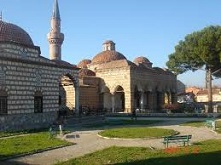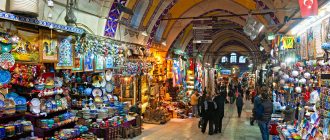Want to learn about Iznik Turkey? Discover the beautiful history of the town of Iznik Turkey which is still known for its ceramics…
This historical town of Iznik was previously known as Nicea. It is located at the eastern edge of Lake Iznik which is in the southern part of the city of Izmit.
Background and History of Iznik Turkey
The ruins of the St. Sophia Cathedral are found right in the center of the town. In ancient times it was a very important part of the Byzantine and Roman empires but fell to the Seljuq Turks in 1078 and the Ottomans in 1331.
Beautiful Ceramics of Iznik Turkey
Before that time it was the center of the Ecumenical Council of 325. It was home to the bishops and clergy who convened there. During the 16th and 17th centuries Iznik or Yznik was famous for its ceramic production and these are still resplendently showcased in palaces as well as mosques throughout Turkey.
The ceramics developed in the region were greatly influenced by European arts during the Ottoman rule. They became very famous all over the world and during the 16th century were considered the most colorful and uniquely decorated pottery and ceramics made in that time.
Islamic influence on the ceramics and Turkish pottery was immense during the 16th and 17th century. This art form flourished throughout the country. There was more of a focus on creating artwork based on calligraphy, flora, fauna and beautiful color designs because Islam prohibits the use of idols and images.
By the 15th century the city of Iznik was firmly established as a center of pottery and ceramics in the country. The influence of Persian and Chinese ware can also be seen on the creations.
The soft and sandy grayish white clay was covered with a white layer on top. The most common items were flat dishes, however many jugs, flower vases as well as bowls were also being crafted here.
The patterns and designs utilized to decorate the ceramics were generally fruits, leaves and flowers. At times the renowned fish scale pattern would crop up as well. Each of the designs was symmetrical and stylized. From the basic blue-and-white hues the pottery started branching out into shades of green, purple and black along with bright turquoise.
By the late 16th century red was frequently used in the creation of dramatic pieces. However the craft saw a decline by the 17th century and by the 18th century the all of the manufacturing facilities had been shifted out of the city effectively ending a beautiful legacy in ceramics.
Cultural Influence on Iznik Turkey
This classic, historical town contains traces of four cultures. These include the Roman Empire, the Byzantine Empire as well as the Ottoman Empire and the legacy of the Seljuq Turks. It has always retained its role as an important trade route and center servicing the trade route from the east to Istanbul.
The historical buildings in the town are well preserved and pay tribute to the four empires. It looks like an open-air museum because of the resplendent structures from each era of its history. It is actually considered an urban center which pays homage to history and is protected and preserved.
Iznik Today
Today the town is a small market town and functions as the administrative center for the district surrounding it. It was famous for its amazing tiles, but when the workshops moved to Istanbul the city experienced a decline. Next a massive economic blow was dealt to it when a major rail network running through the other Turkish cities was constructed and bypassed the town itself.





